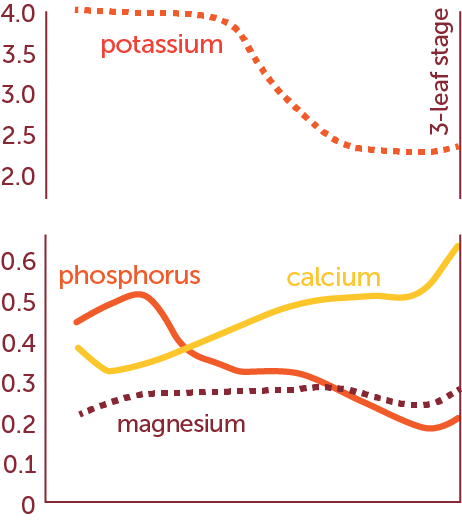The Importance of Macro-Mineral Supplementation
Macro-mineral nutrition is imperative for milk production, fertility, cow longevity and immunity. Macro-minerals are required in grams per day, compared to micro-minerals in milligrams per day. Higher dry matter intake (DMI) and milk production necessitates greater supplementation of minerals. Reid Stockfeeds aims to prevent both clinical deficiencies (visible), and sub-clinical deficiencies (not always detectable).

The seven essential macro-minerals required by ruminants include calcium, phosphorus, magnesium, potassium, sodium, chlorine and sulphur. A sub-clinical deficiency can depress the immune system and increase susceptibility to metabolic and infectious disease. A further decline in macro minerals may then impair milk production, growth and fertility. Macro-minerals can provide a high return on investment and are relatively affordable compared to other nutrients.
Higher per cow milk production, changes in genetics, and modern pasture management practices have changed the daily supplementation requirements of dairy cows. Pasture traditionally had high levels of calcium (0.7-0.9%), partly due to the fact they were 20% clover. Clover is not only high in calcium, but it has a high digestibility and the calcium is very available (easily absorbed). Modern dominant-ryegrass pastures lack available calcium, especially when immature. We typically graze pastures between 2 and 2.5 leaf stage; this is ideal for optimal pasture production, digestibility and fermentable carbohydrate levels, but not necessarily from a mineral absorption perspective.

Calcium is generally more available from water, limestone, di-calcium phosphate (DCP) and calcium chloride, than from cereal grains, ryegrass and other forages. The ratios of macro-minerals and the efficiency of absorption are very important, not just the total amount in grams. For example, there may be plenty of grams of calcium in a diet, but if magnesium is lacking, we may observe hypocalcaemia (milk fever). Magnesium is required for the synthesis of parathyroid hormone (PTH), which upregulates calcium homeostasis.
Accurately estimating macro-mineral requirements can be challenging because it is influenced by:
- Live weight, and live weight variation in a herd
- Genetics and breed
- Animal age, and age range in a herd
- Production stage
- The environment
- Stress (social, physical, psychological)
- Anti-nutritional factors (ANFs) and toxins
- Antagonisms, and interactions with other minerals
- DMI, and rate of passage of rumen digesta
- Absorptive efficiency, and dietary balance of minerals
- Varying contents and mineral availabilities in feeds
- Changes in pasture species, paddocks and soil type
Daily supplementation of macro-minerals is especially important for dairy cows given the daily losses in milk, urine, manure and sweat. A growing foetus also has a demand for minerals.
How much calcium is required by a 600kg cow producing 30L?
13kg DM grass @ 0.4% Ca = 52g Ca x 30% absorptive efficiency = 15.6g Ca
7kg DM cereal grain @ 0.4% Ca = 28g Ca x 60% absorptive efficiency = 16.8g Ca
TOTAL: 32.4g Ca/day may ‘potentially’ be absorbed from the diet, not including water which can vary considerably.
30L x 1.22g Ca/L = 36.6g Ca /day milk production
+ 17.5g Ca/day maintenance
+ 9g Ca/day pregnancy
REQUIRED: 63.1g Ca/day
*This is a hypothetical scenario only using estimates.
A cow can still do 30L without mineral supplementation because in the short-term, the deficit will likely come from bone and other tissues. The long-term consequences of ‘mining’ body reserves of minerals are reproductive issues, disease and premature culling.
Ruminants with severe (clinical) macro-mineral deficiencies can demonstrate craving behaviour such as eating rocks, soil, bones, bark, leaves, wood, manure and urine. This strange eating behaviour is known as pica. Providing ruminants with ad lib access to salt, sodium bicarbonate or superphosphate (immediate short-term only) in drained tubs, can provide an indication as to the potential cause of pica. Free choice access to minerals only works to address a limited range of mineral deficiencies and there is little evidence to suggest it can be used to address trace mineral deficiencies. There will always be a large variation in intake of free choice minerals and there is a potential risk of over-consumption. The safest and most economical method of supplementing minerals is often ‘force fed’ in the grain or pellet ration.
To find out more about the best animal feed or health management strategy for your herd, give us a call and have a chat to one of our nutritionist on 1300 REID FEED or enquire here >
 Author
Author
Chloe Warden-Flood
Senior Ruminant Nutritionist
 Author
Author